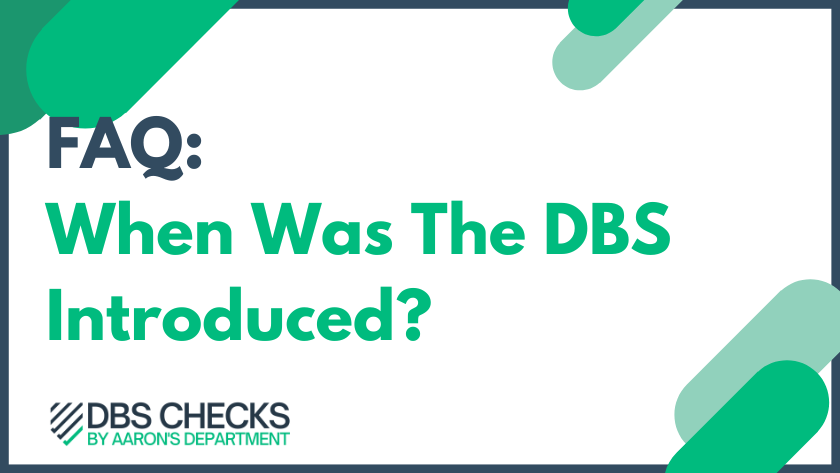Introduction – When Was the DBS Introduced?
When was the DBS introduced? The Disclosure and Barring Service (DBS) plays a pivotal role in safeguarding the UK’s most vulnerable individuals.
DBS Checks are essential for employers looking to make informed decisions about hiring personnel for positions involving children or Vulnerable Adults. In this article, we’ll delve into the history and importance of the DBS while answering the question: When was the DBS introduced?


The Pre-DBS Era
Before the DBS came into existence, the UK operated two separate systems: the Criminal Records Bureau (CRB) and the Independent Safeguarding Authority (ISA). Employers relied on the CRB to conduct criminal background checks for job applicants, especially those seeking roles where they would interact with children or Vulnerable Adults.
Simultaneously, the ISA managed the vetting and barring process, ensuring that unsuitable individuals were kept away from positions where they could potentially harm others.
The Birth of the DBS – When was the DBS introduced?
When was the DBS introduced? The official introduction of the DBS came in December 2012. This marked the consolidation of the CRB and ISA functions into a single, streamlined entity designed to simplify the process for employers and jobseekers alike.
The creation of the DBS was made possible through the Protection of Freedoms Act 2012, turning the DBS into the primary source for background checks in the UK.
Key Objectives of the DBS
- Streamlining the Process with the DBS: When was the DBS introduced? The DBS had a primary goal of streamlining the vetting and barring process to provide a more accessible and efficient experience for both employers and jobseekers.
- Enhanced Safeguarding through the DBS: The DBS aimed to elevate the standards of safeguarding children and vulnerable adults by offering a more comprehensive view of an individual’s history.
- Reducing Duplication via the DBS: Merging the CRB and ISA addressed the issue of duplication, eliminating inefficiencies in the background checking process.
- Strengthening Public Trust with the DBS: By ensuring that those working with vulnerable individuals underwent rigorous background checks, the DBS aimed to strengthen public trust.


Evolution and Improvements
The DBS has not remained still since its introduction. Over time, it has continually evolved to meet the changing needs of safeguarding in the UK. The DBS introduced several vital improvements:
In 2020, the DBS introduced the Update Service, which allows individuals to keep their DBS certificates up to date and conveniently share them with multiple employers, further streamlining the background check process.
In October 2023 there have been significant changes to the filtering of convictions shown on a DBS Check, for more information on these changes, we have a useful article that you may find helpful, here: What the Changes To DBS Filtering Rules Mean For You


Conclusion – When Was The DBS Introduced?
The DBS was introduced in the UK in December 2012, marking the consolidation of the CRB and ISA functions into a single, efficient place to obtain checks.
The creation of the DBS came about with an aim to simplify background checks, enhance safeguarding, reduce duplication, and build public trust.
The DBS continues to adapt to meet evolving safeguarding needs, ensuring that the safety of vulnerable individuals remains paramount in the UK.
Forward someone this article!
Related Content
If you have found our article, When was the DBS introduced, useful, then you may enjoy some of our other posts on DBS checks and questions that have arisen.
About The Author


John Schofield-Antoncich
John has processed more applications than days he has been alive, and has become the DBS expert. Got a question? He knows the answer!
